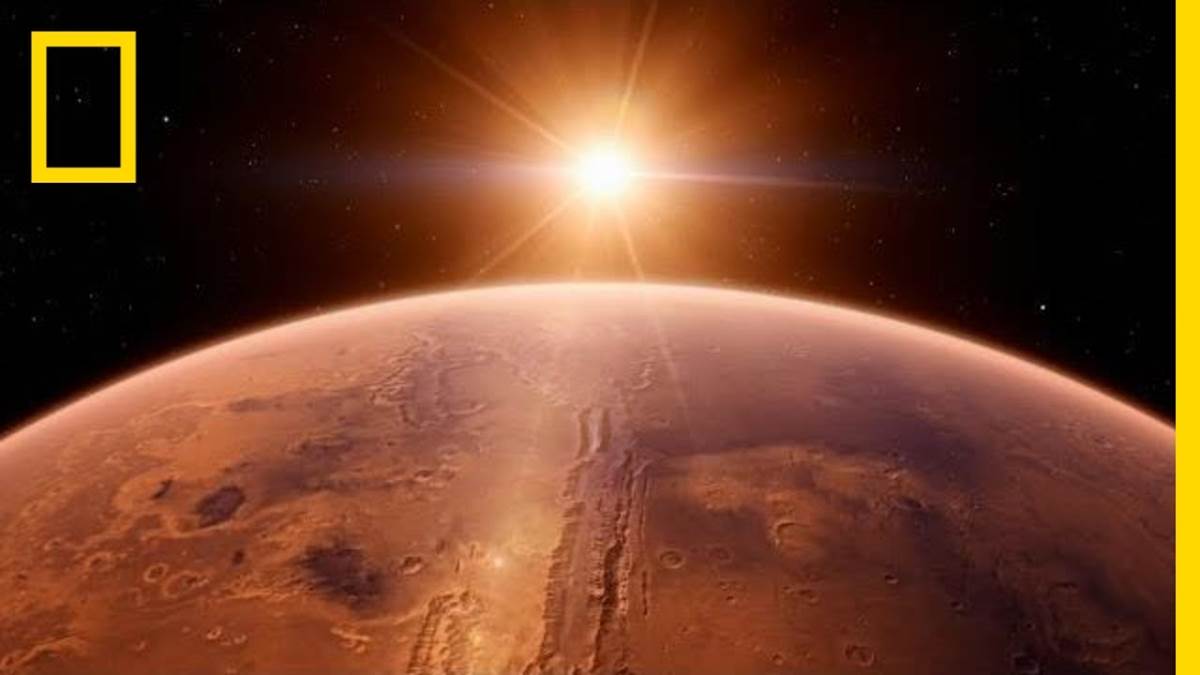David Bowie had a big hit in 1971 with the song “Life on Mars” from his Hunky Dory album, but in the latest episode of Overheard at National Geographic, the question isn’t so much if there is life on the red planet, but was there ever life on Mars. Host Amy Briggs takes listeners on an auditory journey through space and time on this week’s engaging new episode. This episode is titled “Mars Gets Ready for its Close-Up.”
Picture this: Ancient Egypt, 3,500 years ago. Astronomer Senenmut creates a map of the heavens, the first-known plotting of Mars. Ever since then, mankind has been fascinated by the red planet. In 1906, American astronomer Percival Lowell published his map of Mars as he perceived it, envisioning a network of irrigation canals that appeared to be made by intelligent beings, giving rise to a host of science fiction stories, including Edgar Rice Burroughs’ John Carter of Mars, which inspired filmmakers like George Lucas and was adapted as a film by Andrew Stanton in 2012. Our fascination with Mars has never really stopped.
Telescopic images of Mars disproved Lowell’s theories in 1910 and the nail was put into the coffin in 1965 when NASA’s Mariner 4 got within 6,000 miles of Mars’ surface, giving scientists their first close-up images of the Martian surface. Flash forward to 1996 when a Martian meteorite was discovered in Antarctica that included a worm-like fossilized microbe, believed to be a life form. Scientists had a renewed reason to be interested in exploring Mars to find out not if life exists there now, but if it ever did.
Planetary Scientist Jim Bell has worked on several Mars Rovers for NASA, including Perseverance, scheduled to land on February 18th, making this episode particularly timely. He takes Amy Briggs on a tour of Gale Crater through imagery from the Curiosity Rover which yields imagery of a barren landscape with no vegetation, a cloudless sky that changes colors depending on the time of day, and large hills eroding in the background. Three or four billion years ago, the Gale Crater was a lake, now an ancient floor where signs of microbial life could be discovered.
Having left earth on July 30th, 2020, Perseverance was built in Curiosity’s image, 90% out of spare parts from the previous rover, which is how NASA was able to afford this new mission. Looks can be deceiving, for Perseverance has a lot of upgrades and features that weren’t available when Curiosity was launched in 2011, almost a decade ago. One of the auditory highlights of this episode is sounds from the thermal systems of perseverance as it travels through space on its journey.
Perseverance’s landing sight is Mars’ Jezero Crater, about the size of Connecticut that is notable for having a river that used to flow down the crater’s walls, depositing sediment in the crater floor that could be a likely place for signs of ancient life. NASA engineer Christina Hernandez shares details on some of Curiosity’s new features, which include Mastcam-Z, a panoramic and stereoscopic camera system, in addition to a secondary SuperCam system that’s also capable of chemical analysis. A weather suite called MEDA, a ground penetrating radar system called RIMFAX, and then there’s MOXIE, which can turn carbon dioxide into oxygen, a possible way to one day colonize the red planet.
Perseverance’s primary mission will last one year on Mars, the equivalent of two Earth years. Scientists analyzing the data and directing Perseverance’s travels will be living on Mars time, essentially living like Martians here on Earth. This mission also explores a different hemisphere of Mars, with Curiosity's Gale Crater south of the equator while Jezero Crater is north of it. The Jezero Crater is in what’s known as Syrtis Major, a large, dark area of Mars that’s been a dominant feature of telescopic research since it was first seen by humans in the 1600s.
Will we find signs of life on Mars? Time will tell, but National Geographic writer Nadia Drake, daughter of famous astronomer and astrophysicist Frank Drake, says it’s possible. With Perseverance planning to collect samples that will be brought back to Earth for analysis on future NASA missions, we will be able to explore the Martian climate like never before in preparation for the inevitable first human voyage to Mars. We already know that Mars once had all of the conditions necessary for life to exist. The question now is did it, or could it in the future? We’re at the drawing of a new age of discovery.
You can listen to this full episode and others at the official Overheard at National Geographic website.

